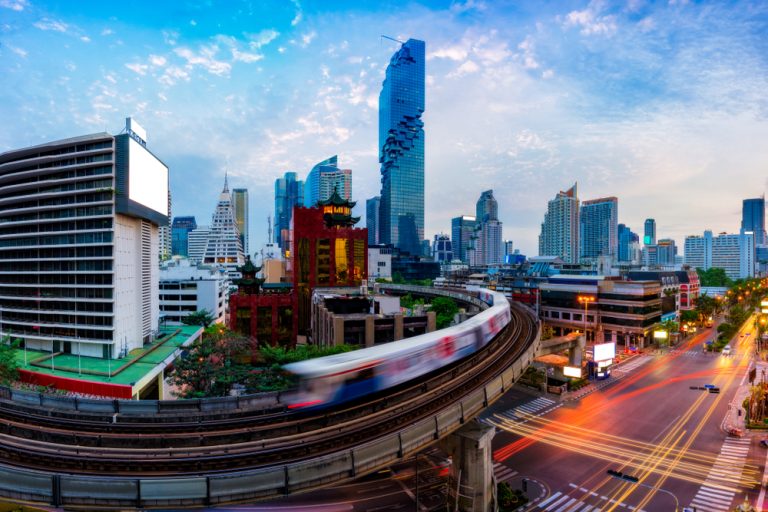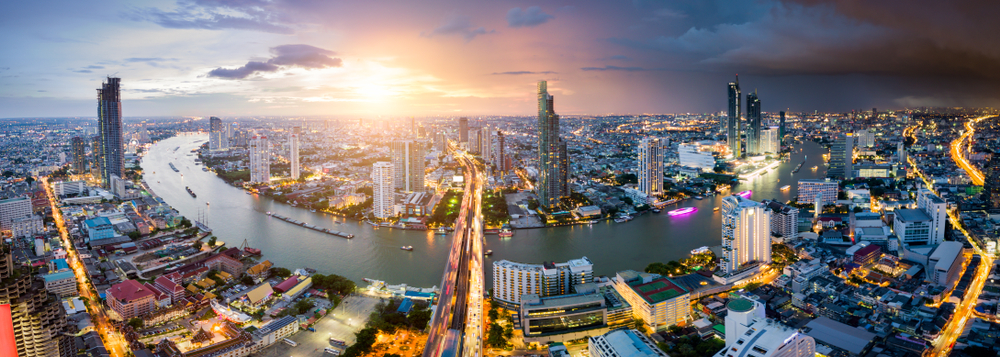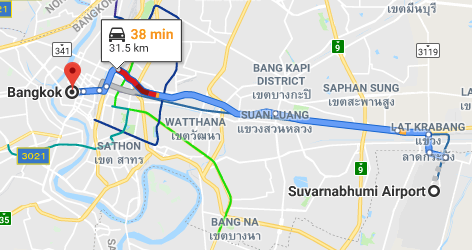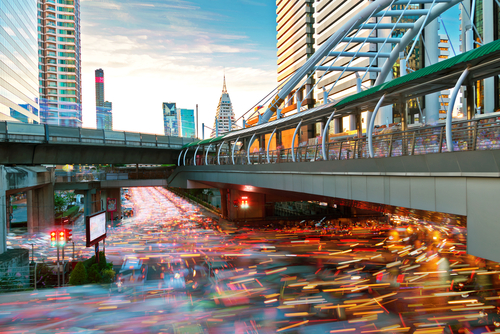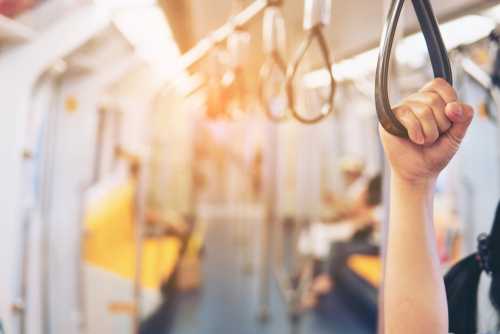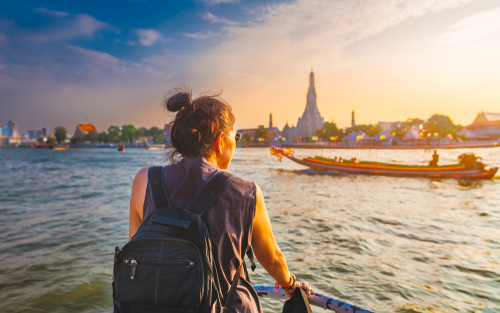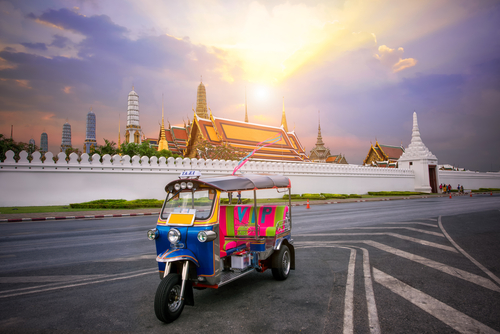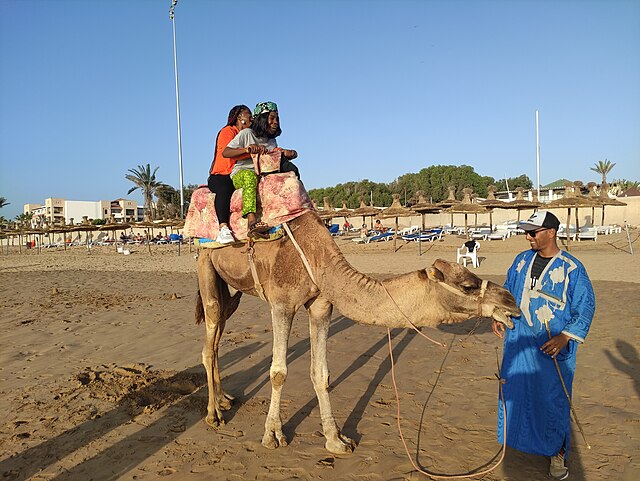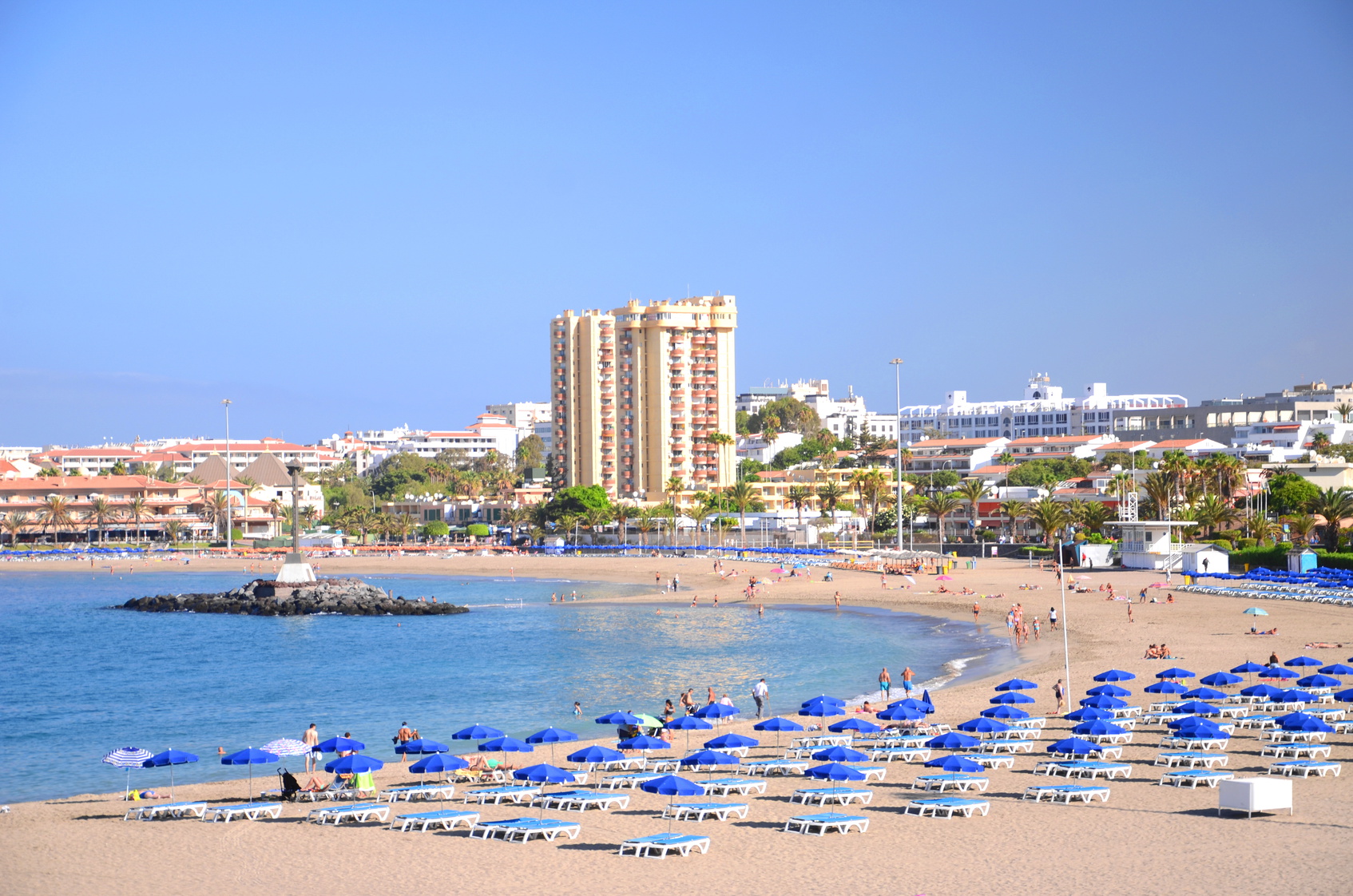My main memory of visiting Bangkok for the first time more than 20 years ago is one of seemingly endless taxi rides. We arrived at the old Don Mueang Airport after an eventful flight from Kathmandu. The main in-flight entertainment was watching a group of Nepalese men consume copious amounts of red wine and brandy during the flight. As we approached Bangkok the poor cabin crew had quite a job of seating these jolly passengers whose white suits were now covered in red wine stains and were incapable of finding their seats. Certainly the most entertaining flight of my lifetime!
The taxi ride from the airport to where we were staying at Sukhumvit Soi 4 seemed to take forever. Little changed in the following days as we visited the main sights by day and numerous bars and restaurants at night. Every outing seemed to involve an excruciating amount of time sitting in the back seat of a taxi watching the meter tick over whilst we hardly ever seemed to move in the intense traffic which never seemed to ease off at any time of day or night.
Fortunately, this is no longer the story of getting around in Bangkok. The modern Suvarnabhumi International Airport opened in 2006 and Don Mueang was redeveloped as a hub for regional flights. And getting around has never been easier thanks to the development of the Skytrain (BTS) and Metro (MRT) networks. Most tourist attractions, nightlife districts and shopping areas lie within close proximity of train stations which is ideal for tourists and business travellers alike.
Bangkok Airports
Suvarnabhumi International Airport
Located 30km east of the city centre, this is Bangkok’s main airport which deals with more than 60 million passengers per year. It is a hub for a number of airlines including Thai Airways and Bangkok Airways and welcomes flights from all over the world. Passengers arriving at Suvarnabhumi Airport can travel to Phayathai Station in the city centre by means of the Airport Rail Link (ARL). At Phayathai Station passengers can transfer to the Skytrain (BTS) service which has many conveniently located stations close to major hotels and tourist attractions. The airport train also stops at Makkasan Station en route which allows passengers to change to the extensive underground network (MRT).
There’s also a well organised public taxi service on the ground floor of the airport’s arrival area. Passengers simply take a ticket from a machine then walk to the correct queueing lane as indicated on the ticket. The final fare is what shows on the taxi meter plus an airport surcharge and an additional fee for using the expressway. New arrivals should never take a taxi with individuals who approach them in the arrivals area as these are usually illegal drivers who are sometimes associated with crime gangs.
To avoid the hassle of travelling into the city by public transport or the worry about having to deal with non-English speaking taxi drivers on arrival it’s well worth pre-booking a private transfer from Bangkok’s Suvarnabhumi Airport. Drivers are all fully licensed and can provide transfers to hotels throughout the city as well as to more distant tourist destinations such as Pattaya or Hua Hin.
Don Mueang Airport
Located 25km north-east of central Bangkok this was the city’s main international airport before the opening of Suvarnabhumi. Nowadays it serves as a major regional airport which deals with over 40 million passengers per year on mainly domestic flights and services throughout Asia. It is also a hub for a number of budget airlines including Thai AirAsia, Thai Lion Air and Nok Air.
Free shuttle buses are available from Don Mueang to Suvarnabhumi Airport and there are some public buses into the city. An airport rail link is currently under construction. The most convenient way for passengers to get into Bangkok from Don Mueang Airport is by arranging a private transfer or by taking a metered taxi on arrival.
Getting Around in Bangkok
Bangkok Mass Transit System (BTS) – “Skytrain”
The Skytrain network began operations in late 1999 with 23 stations which has since expanded to include 43 stations and almost 50km of track. The number of daily rides on the service has rocketed from around 150,000 in its first year to more than 700,000 today. The network is made up of the Sukhumvit Line which runs to the north and the east of the city and the Silom Line which runs to the south and west. Further extensions are under construction. This is a great service for tourists who will find that many stations are conveniently located within walking distance of hotels, historic attractions, markets, commercial districts and nightlife.
Bangkok Mass Rapid Transit (MRT) – “Underground”
This transport network consists of the original “Blue Line” which opened in 2004 and the newer “Purple Line” which opened in 2016. Between them they have 35 stations serving 45km of track made up of three heavy rail lines and two monorail lines. Whilst serving as a convenient way to visit a number of city attractions the Mass Rapid Transit system also connects with the Skytrain network at Sala Daeng Station on the Silom Line and Asok Station on the Sukhumvit Line. Unfortunately for visitors, the Airport Rail Link, Skytrain and Underground do not have an integrated ticketing system so passengers must buy separate tickets for each service.
Bangkok Street Taxis
There are thousands of metered taxis roaming the streets of Bangkok which are very reasonably priced if you can cope with the horrendous traffic jams. Unfortunately, taxi drivers have a fairly bad reputation in Bangkok for their rudeness and for ripping-off passengers by refusing to use the meter and wanting to charge excessive fixed prices. Although a little more expensive, many visitors download the Grab taxi app to avoid such hassle over fares. Using the BTS and MRT networks is a far cheaper and more efficient way to get around the city.
Chao Phraya River Boats
Bangkok stands on the Chao Phraya River which serves as a major transport artery running through the centre of the city. As well as tourist boats offering sightseeing tours along the river there are all manner of other vessels including ferry services across the river, water buses and river taxis. Visitors can also rent long tail boats and have a driver take them on a private tour of the river’s main sights and the klongs (canals). Guests staying at the luxury Riverside hotels can take free shuttle boats to and from the Sathorn (Taksin) Pier which is ideally located next to the Saphan Taksin Skytrain station.
Seeing the illuminated Grand Palace, Wat Arun and the Golden Rama VIII Bridge from the river at night is a very special experience which is best enjoyed on a dinner cruise. Some companies pack tourists onto their vessels and offer a basic buffet whilst others such as the Apsara Dinner Cruise offer a more exclusive experience which includes Thai cuisine at its best. This cruise takes place on a vintage rice-barge and departs daily from the River City Pier (next to the Si Phraya Pier).
Tuk-Tuks
These three-wheeled rickshaws with a small motor have long been a cheap, local form of transport although the establishment of the Skytrain service has reduced demand for them. They can be seen buzzing around the streets of Bangkok and offer a novel way to make short journeys. Passengers should be clear about their destination before getting on-board and should agree a price before departing. In most parts of the city the tuk-tuk drivers are hard working individuals simply trying to earn a living. However, the characters who operate around the Grand Palace, Wat Pho and some other major attractions are often con-artists who will grossly overcharge visitors. They are also well-known for claiming that certain places are closed then taking passengers to shops where they are paid a commission. If in doubt it’s a good idea to stick with metered taxis and the mass transit networks.
Organised Excursions
Finally, if you want to get out of the city for a short excursion to nearby attractions you’ll find plenty websites and local agencies offering half-day and full-day tours. Whilst some destinations can be reached by public transport it’s often a good idea to join a group excursion and take the hassle out of getting to such places as the Damnoen Saduak Floating Market, the UNESCO World Heritage Site of Ayutthaya and the Bridge On the River Kwai at Kanchanaburi.
About Shuttle Direct
Shuttle Direct is the most established and respected airport transfer provider in Europe and northern Africa. Our friendly local drivers will ensure your safe, economical, and convenient passage to and from the cruise terminal, airport, or major train station of your choice with a minimum of fuss. Book your transfer with our easy to use online booking system and leave the rest up to us!

